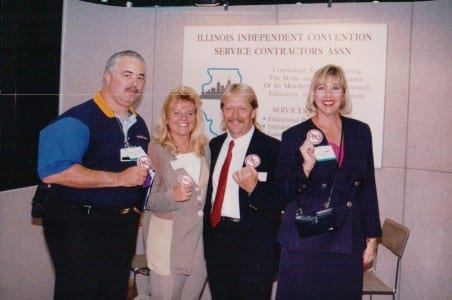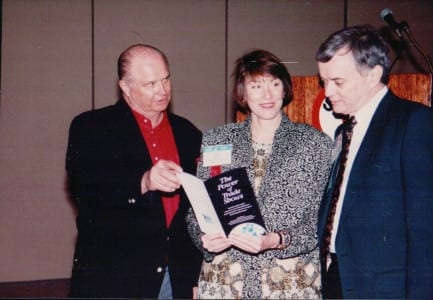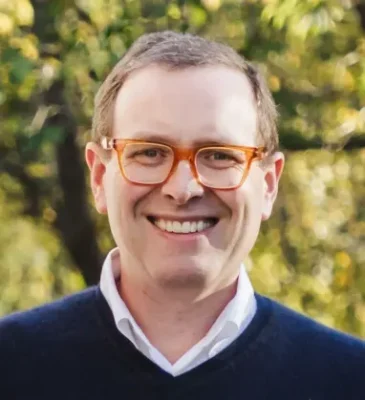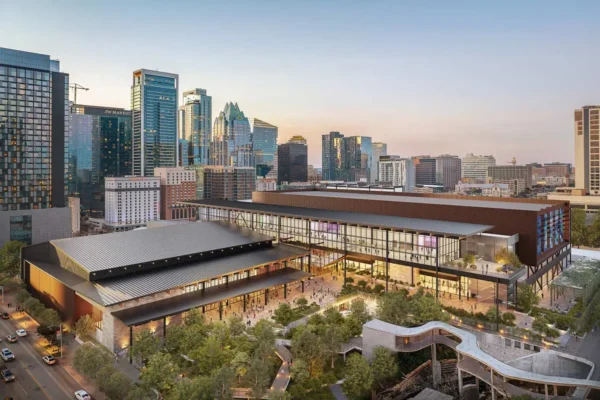There are 22 associations in North America that represent the meetings and tradeshow industry. One such association is Exhibit Designer & Producers Association (EDPA).
EDPA has been a unique organization nearing its 60th year as an association. Each year, the association elects a new president who takes office on the first of the year. All EDPA presidents start on the executive committee, sharing a different committee chair for four years before serving as president. They then serve an additional year as a past president. All involvement is voluntary, involving much time and energy. Each past president shared a common passion, and that is to grow and strengthen the exhibit industry.

In the early days of EDPA, most exhibit company owners were designers or carpenters who went on as entrepreneurs to start their companies. These were the members of EDPA. Few had formal training to be managers of a company, but excelled in spite of that. They all knew exhibit design and construction better than management. As their companies grew, they hired others to help with management and financial expertise.
EDPA was created in 1956, electing Norman Hadley of Hadley Exhibits based in Buffalo, N.Y., as its first president. In the early days, exhibit company owners from the East Coast and Midwest played the strongest role in leadership, gradually attracting involvement from the West Coast and the South. From 1956-1985, EDPA leadership was affectionately coined “the good old boys club” of the exhibit industry. EDPA members were owners of exhibit companies with their main concerns being fair competition, work rules and business management issues. The leaders were keen to realize that exhibit building was dependent on the success of tradeshow marketing as a strong component of their clients’ marketing mix. The association also supported the creations of TSB (now CEIR), NTSEA (now TSEA), HCEA, EACA and E2MA.

Note that many influencers on the exhibit supplier side of the industry played a strong role behind the scene and chose not to be EDPA presidents, such as Buck and Don Freeman, Lew Johnson, Bill Mee, Peter Hausner, Fred Kitzing, Dan Vander Sanden, Bill Haney, Clay Wilkening, Paul Willett, Bob Dallmeyer and Dick Swanby, to name a few.
EDPA rolled along from 1956-1977, and then nearly went bankrupt. In 1977, it collected $2,000 from each company member to pay their debts to get back on their feet. It changed from using an association director only to hiring an association management company in Milwaukee, Wis., to manage the association. This group did a lot to push EDPA forward, but lacked a visible lead person. During this period the EDPA presidents served the role as the front person with a different representative each year. In 1997 and again in 2008, EDPA switched to association management companies that included a staff and a visible management director.
Growth of the EDPA association really began to increase in the ‘80s when other levels of the exposition industry (designers, AE’s, project managers, supplier part manufacturers, I&D, contractors, freight companies and portable/modular specialists) got involved as members. Further growth kicked in when the popularity of tradeshow marketing in the U.S. exploded between the 1980s and 2000. Many new component parts used in the industry (fabric, graphics, systems, freight, lighting, A/V, furniture, I&D, measurement/training services and now international) began to flourish, adding to tradeshow marketing growth.
With each growth spurt came new industry issues to focus on. Each EDPA president played a role contributing to exhibit industry issues during their term. They each took the time see the big picture and contribute rather than standing on the curb watching the parade. The dedication and vision of each president added a new building block of growth that formed the EDPA as we know it today. Here are the EDPA presidents and some of their contributions through the years, though there is so much more to tell about each president:
Norman Hadley (1956): First EDPA leader of exhibit designer and fabricator issues
Harvey Steif (1957-59): First to take on a two-year term to complete what he started.
Harold Averick (1960-61): Instrumental in supporting the creation of MEA (Medical Exhibitors Association) later to be known as HCEA; began the EDPA economic survey concept.
Clarence Murphy (1962-63): Pushed for growth and unity of tradeshow suppliers.
Clifford McKay (1964-65): First president not from the East Coast (Ohio Displays) to expand national recognition of suppliers.
Harold Lightman (1966-67): Pushed for harmony among industry segments.
Rudy Speerschneider (1968-69): Helped to jump start the Exhibit Institute Conference/NY dedicated to exhibit design and marketing.
Syd Berman (1970-71): Owner of Berm Studios who focused on designer issues.
Robert Nagle (1972-73): First to represent I&D as a specialty member of EDPA.
Charles Manne (1974-75): Pushed EDPA to become more than a club of owners. Instrumental in supporting NTSEA (Exhibitors Association), later to become IEA (International Exhibitor Association), and then IAEA.

Jerome Lawton (1976): First lawyer to be an EDPA president.
Robert Firks (1977-78): Created an exhibit building standards manual for safety and started the Hazel Hays Award; helped to refocus the EDPA mission statement.
Donald Fairweather (1979): Introduced museum design as an exhibit component beyond tradeshows and began one-year terms as president.
Thomas Knott (1980): Brought network of companies thinking to EDPA; first to distribute a modular exhibit system network in the U.S.
Robert Lange (1981): Electrical contractor in NYC and first non-builder president; instrumental in attracting other show contractors to join EDPA.

Jan Spieczny (1982): Instrumental in supporting the jump start of TSB (Tradeshow Bureau) with Lew Johnson, later to become CEIR; he and Bob Firks were the only EDPA presidents to also serve as presidents of TSB (Trade Show Bureau).
Don Sparks (1983): Replaced the EDPA executive director with association management; pushed for leadership & integrity.
Don Stacey (1984): First to support the specialty needs of freight companies and I&D for tradeshows.
Moe Bell (1985): First to represent the West Coast suppliers.
Don Stacey (1986): First to be reelected twice as EDPA president with dedicated leadership.
Dan Hartwig (1987): Prepared the first meaningful economic survey for exhibit industry suppliers; moved association management to a Milwaukee management company.
Mark Nagle (1988): First of three father- son presidents of EDPA; helped to unite show contractors with exhibit builders and I&D with national service thinking.
Steve Berman (1989): Pushed to connect the different segments of the industry.
Ingrid Boyd (1990): First female president; introduced international exhibiting and IFES to EDPA.
Gary Stewart (1991): Started first college level designer training with Auburn University; promoted the concept of No Spec Design; managed the first Designer Symposium Event for EDPA in 1996; conducted for three years.
Bruce Deckel (1992): Pushed to grow EDPA chapters in the U.S.; helped to squelch EAC fee concept started by show organizers.
Doug Zegal (1993): Marketed the value of EDPA membership; introduced Roberts Rule to board meetings; created committees for membership involvement.
Jay Barnwell (1994): Instrumental in fundraising for EDPA initiatives and financial management of the association; served as president of EDPA Foundation.
Ron Malliet (1995): Brought order to EDPA meeting process and By-Law changes to EDPA membership process and qualifications.
Skip Speerschneider (1996): Reached out to IAEE to form joint meetings; launched the Designer Symposium for exhibit designers.
Larry Kulchawik (1997): Switched association management firm to Kellen with Bob Gelardi and Pete Dicks; supported international issues, college level exhibit design education and led UL 2301- standards for safety in exhibit design.
Robert Laarhoven (1998): Created greater awareness for systems and modular exhibits as a component to EDPA membership.
Sue Renner (1999): Created greater awareness for I&D component of membership; supported EAC’s as a separate component.
Gene Winther (2000): First EDPA president to have served on IAEE board before EDPA; focus was on increasing EDPA membership and value; helped to create the EDPA Foundation as its first president; created the EDPA Ambassador Award.
Dalton Jenkins (2001): Created greater awareness for international issues and IFES.
Mark Brauer (2002): Instrumental in jump starting EDPA Chapters in the U.S.
Norm Friedrich (2003): Brought greater awareness to exhibit systems and vowed to bring back the “D” in EDPA through education; created the Designer of the Year Award.
Gwen Parsons (2004): Created greater awareness for portables in the overall mix.
Mark Johnson (2005): Supported educational issues and the international chapter; championed the first EDPA exhibit at Euroshop.
John Otton (2006): Helped to raise the bar on speakers and format for the annual meeting; stared the first Supplier Showcase component to the annual meeting; brought greater awareness to transportation issues.
Derek Gentile (2007): Supported design and event issues for EDPA growth.
Marybeth Geiser (2008): Instrumental in fundraising with addition of silent auction; made the switch to Red7 Media (Jeff Provost) for new EDPA management company; created the Eddie Award. Branded annual meeting now called ACCESS.
Dan Cantor (2009): Contributed greatly to EDPA financial management and economic survey relevance; pushed for value in membership; led fiscal responsibility at start of recession.
Rob Cohen (2010): Lawyer who served to bring greater awareness to exhibit lighting and safety; supported unity and dialog among general contractors and show management.
John Rose (2011): Brought theatre thinking to exhibit design; instrumental in promoting international and educational issues; project managed EDPA exhibit at Euroshop.
Cam Stevens (2012): First Canadian Prime Minister of EDPA; enhanced the value of the economic survey to include other components; rallied to propel exhibit related education forming the first educational “Road Show Tour.”
Justin Hersh (2013): Pushed for partnership advocacy with industry groups, especially the newly formed E2MA.
Jay Burkette (2014): Announced December 2013 at the annual EDPA Access meeting in Marco Island, Fla., Burkette will continue the legacy.
A big thank you to EDPA past presidents for your contributions and getting EDPA where it stands as an expo industry leader today!

Although many EDPA presidents led many parades to progress, it was the committee teams and staff within EDPA that got the real work done. Many initiatives took a long time to happen – some never got off the ground.Initiatives pushed forward that progressed:
- EDPA College education program started in 1990 at Drexel and Auburn, shifted to UNLV and Bemidji. Now at FIT and Bemidji, undergraduate and master’s degrees in exhibit design are offered.
- The EACA concept was started at EDPA (Tom Cassell/Sue Renner/Jim Wurm), then formed as a separate association that is now a part of E2MA.
- The Tradeshow Bureau concept was supported by EDPA (Hazel Hays winner Jan Spiczny, Don Sparks, Dan Hartwig and Jane Lorimer), then changed its name to CEIR.
- HCEA was launched by an EDPA president (Harold Averick) on the East Coast in 1961.
- EDPA supported IAEE and the TS2 Show heavily.
- EDPA collaborated with IFES in 1990 to support international growth. Hazel Hays winner Ingrid Boyd led the charge. Without EDPA support, IFES would likely remain a European group.
- EDPA supports the efforts of Exhibitor Magazine, Exhibit Builder Magazine, TradeShow Week and Exhibit City News.

Initiatives started by EDPA that did not come to fruition:
- No Spec Design- Past president Gary Stewart pushed for “no spec design.” All EDPA exhibit design companies bought into the concept (so did IAE who signed an agreement), but it did not last long before others used free design as a marketing ploy. Good idea, but no one wanted to live by the sword.
- UL2305 Standards for Safety in Building Exhibits- After three years of research and planning, the EDPA team and Underwriters Laboratory (which included EAC, McCormick Place, Orange County Convention Center, Georgia World Congress and Las Vegas Convention Center) created an exhibit building standard termed UL2305. The standard was presented to IAEE (the right group to promote safety since their members were the “exhibitors” who contracted for exhibits to be built.) They did not wish to push the concept forward on the grounds that they did not wish to tell their members how to build their exhibits. In a survey before launching the concept, the EDPA team discovered that 85 percent of exhibit companies were already following most of these standards and thus would not add further cost to fabrication. It was also discovered that if a single show asked that their exhibitors follow a standard of safety when building their exhibits, then the convention center would reduce the cost of renting the space.
- Designer Symposium- From 1996-98, EDPA organized a Designer Symposium event (specifically for exhibit designers). The first was in Washington DC, then Atlanta followed by Chicago. Each event was held in June and was a big success with designers. Exhibit company owners then baulked since they needed their designers designing and it cost them money. Add to this, some companies used this event to recruit new designers. After three years, the event lost money and hurt the EDPA balance sheet, thus cancelling the event. Lee Knight at Exhibitor Magazine followed up on the concept and organized a similar event, still held yearly.
Over the years I have been amazed how selfless the EDPA presidents have been when it came to supporting the tradeshow industry as a whole. Their dedication and time spent away from running their own companies surely should be commended. Today the leaders at EDPA continue to collaborate and create initiatives that support growth and value for tradeshow and event marketing.






























